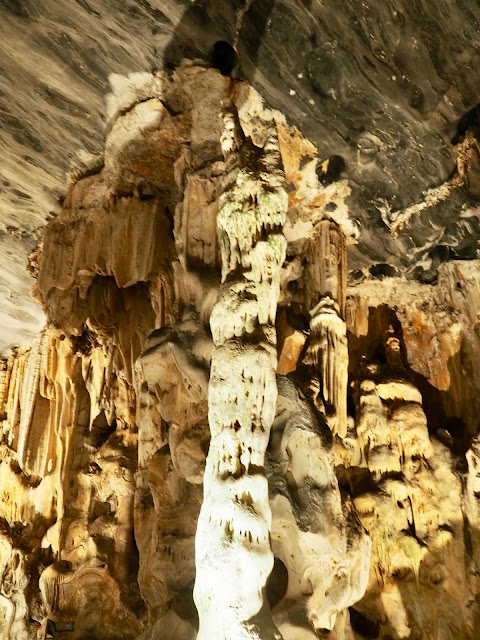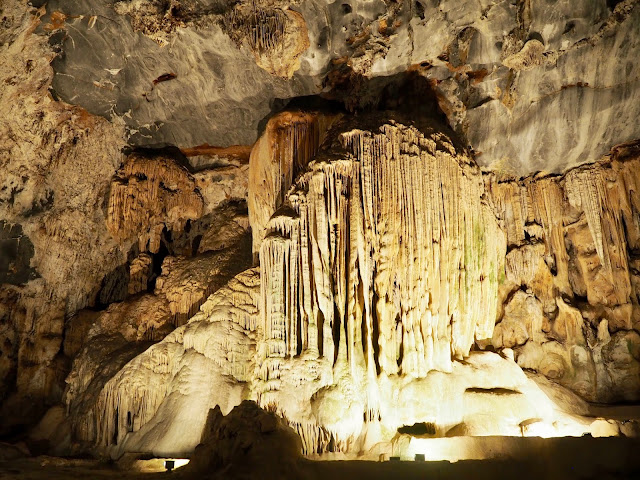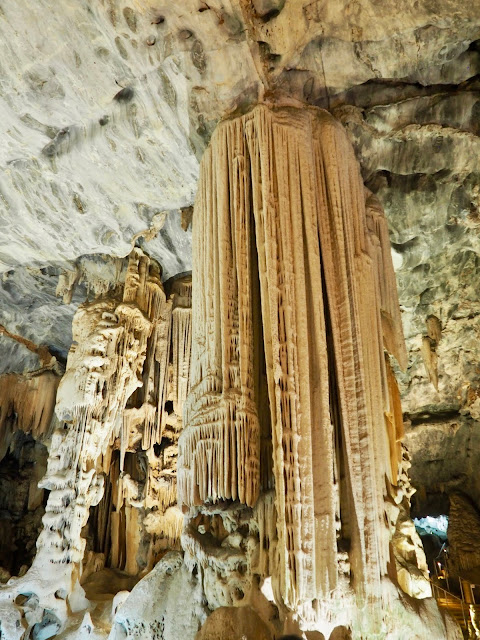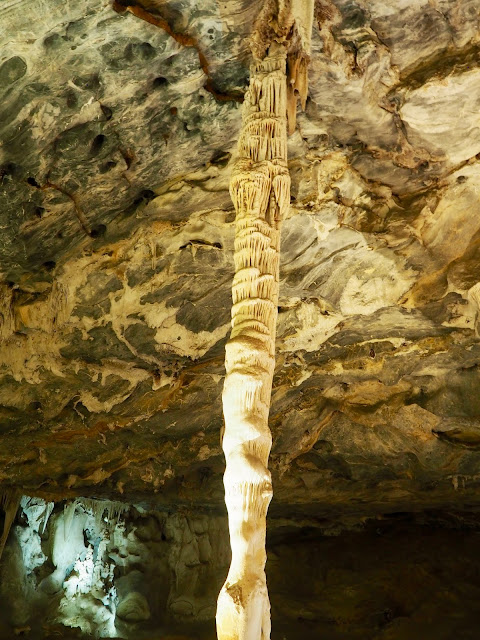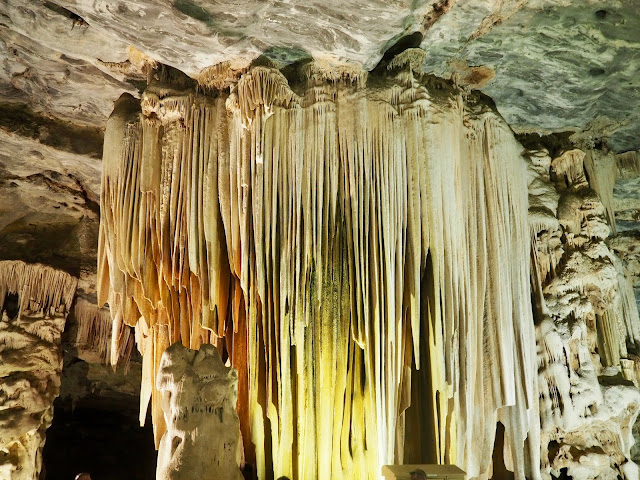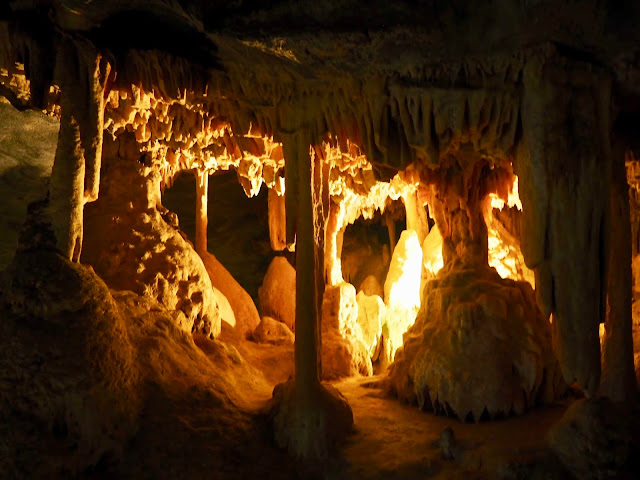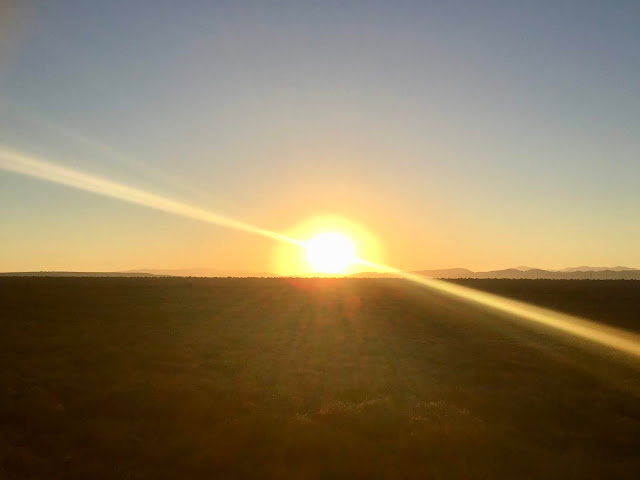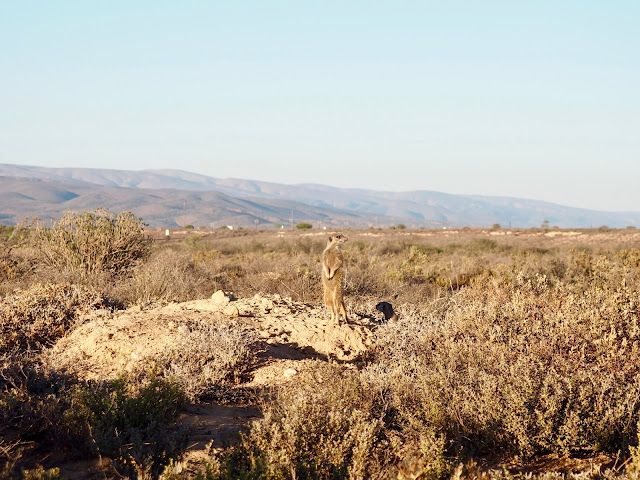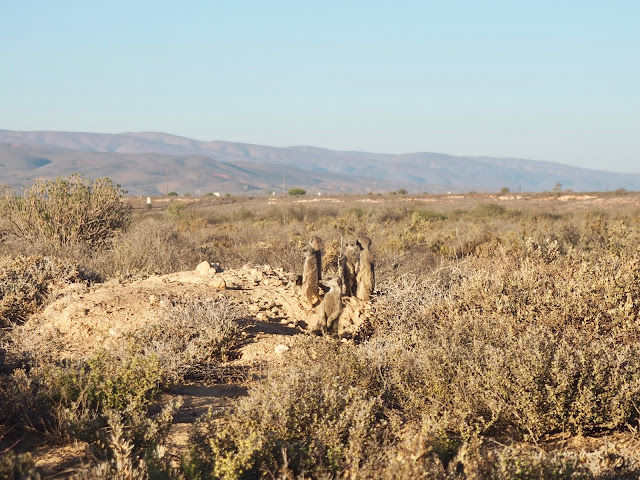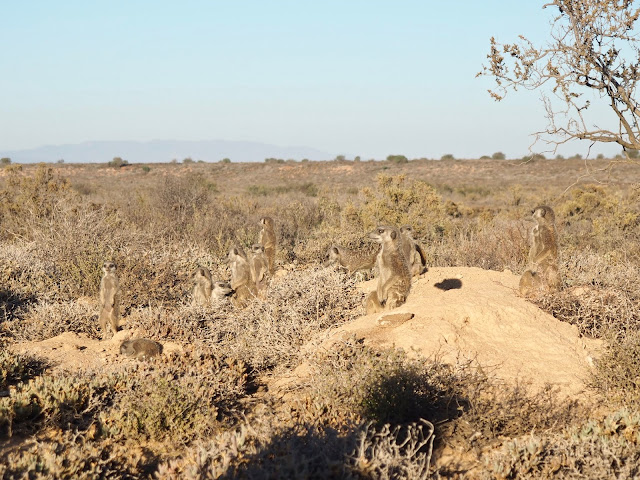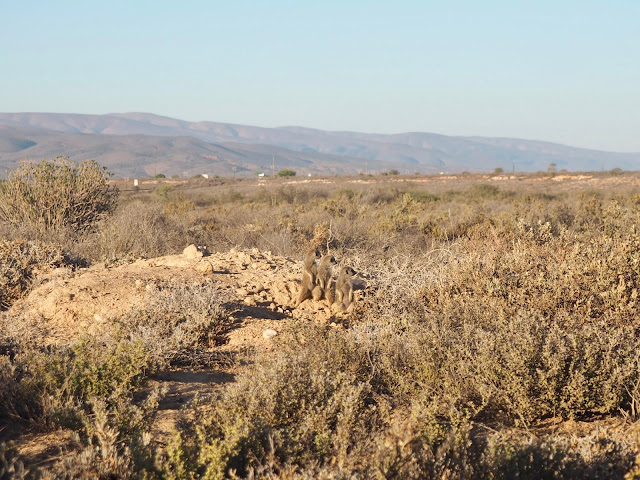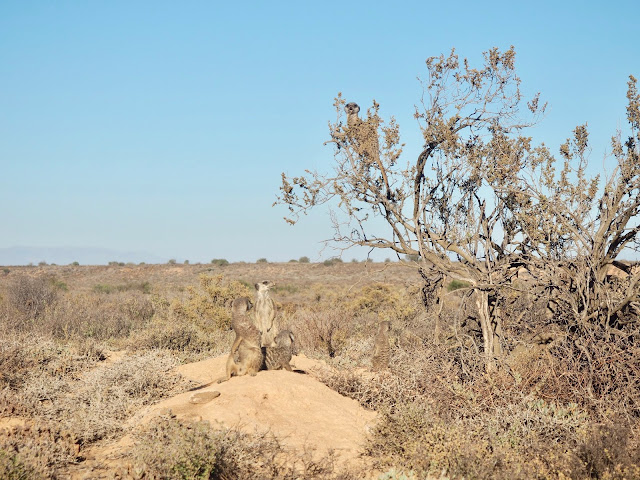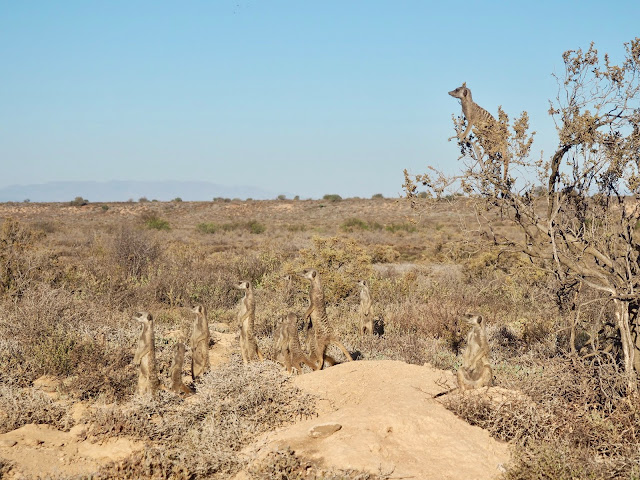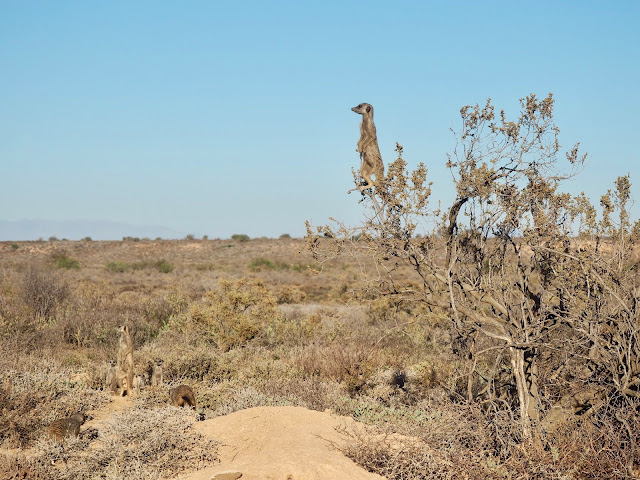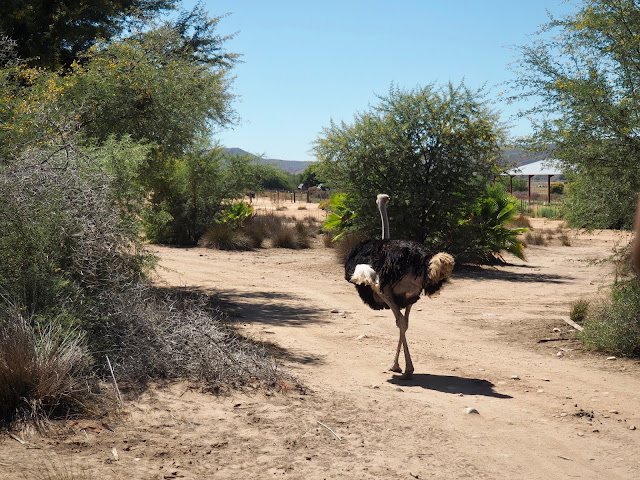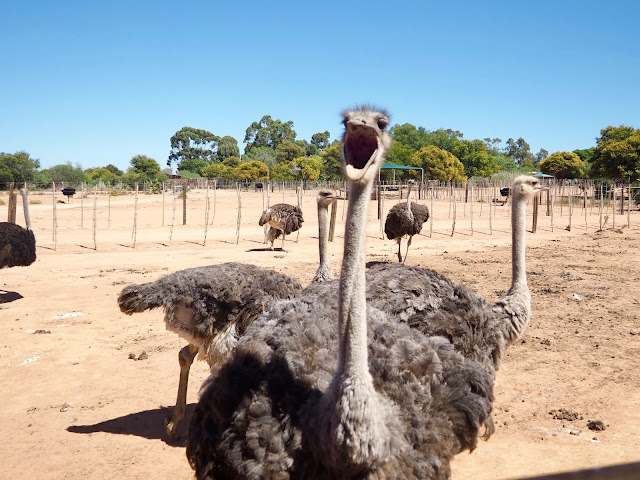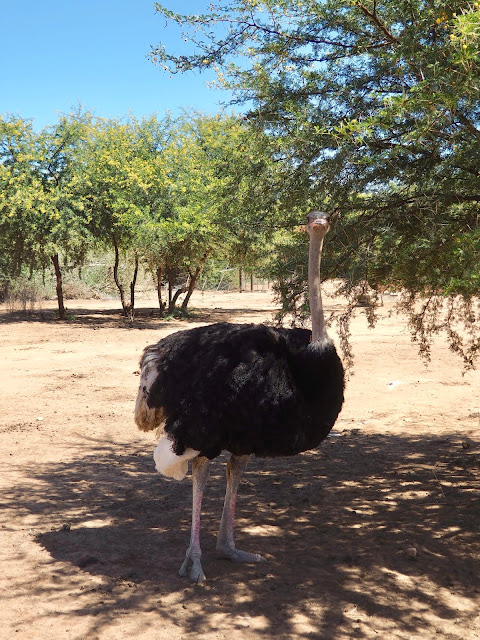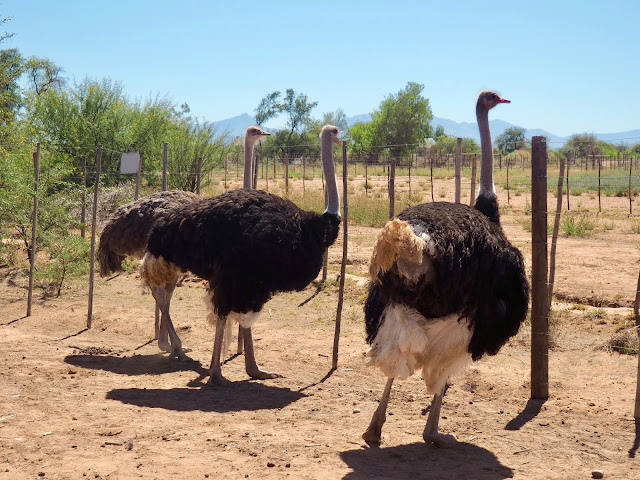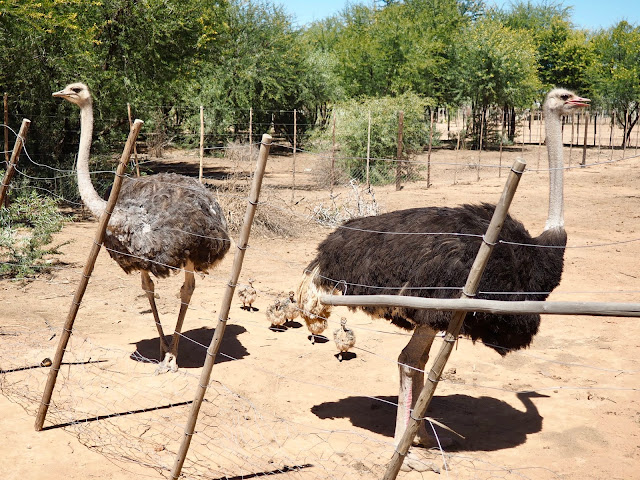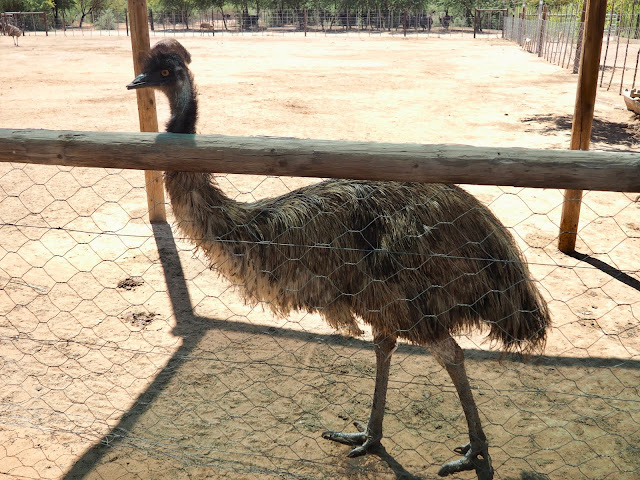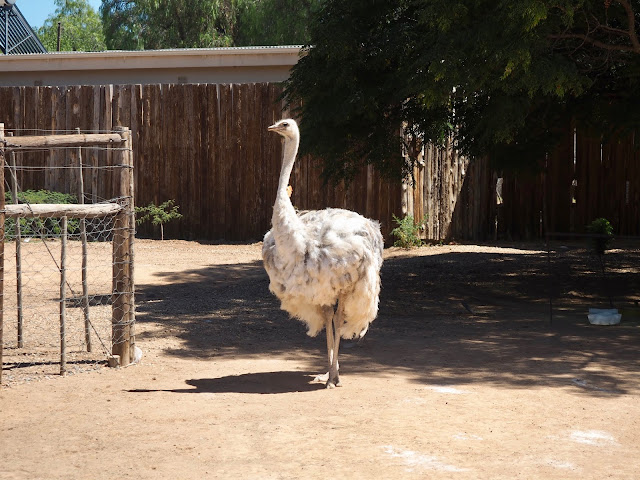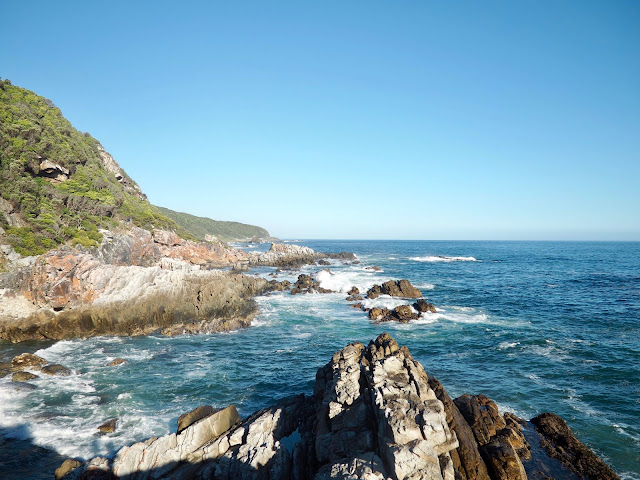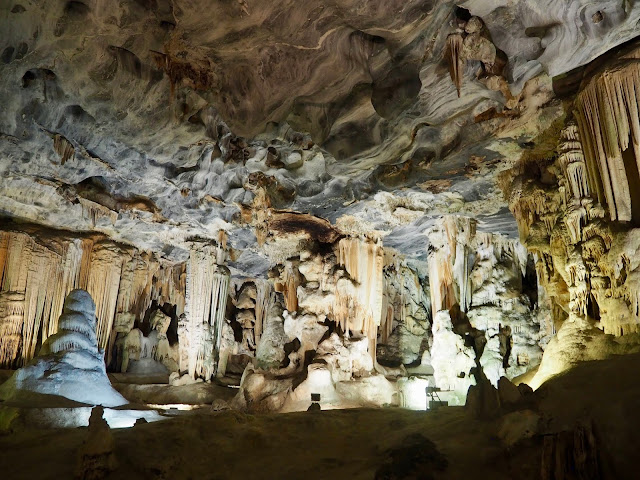
Oudtshoorn | South Africa
Goodbye Garden Route… I was definitely a bit disappointed to discover that we would be heading inland again, away from that stunning coast, for the next two nights of my South African trip. According to the internet, this is still technically the Garden Route, but it felt less like it, away from the coast. However, it was still worth it in part. Our itinerary actually got switched around here, as we were supposed to have a white water rafting excursion included, but due to the drought conditions, the water in the river was too low. So instead, it was substituted for a meerkat experience – more on that in a minute – which was in Oudtshoorn, the place we were stopping at next anyways. I didn’t mind the switch, as I’ve done rafting a couple of times before, but it meant all our activities were in Oudtshoorn, yet we still had to stop in Swellendam the night after, where the rafting would have been, with nothing to do there! Hence the reason I’m not going to be writing a post about that as a destination! Anyways, time for all the Oudtshoorn activities…
As we left the coast and drove inland, we quickly climbed higher above sea level – I hadn’t realised South Africa was so mountainous before this trip! The landscape also got dry and dusty again, similar to back in Lesotho, with rocky slopes and narrow roads winding through the mountains. It wasn’t a long drive fortunately, and we arrived in Oudtshoorn by around midday. We set up camp, and had lunch there, before hopping back on the truck to head out the town again. Our first activity – all three were included in the whole trip by the way – was a visit to the Cango Caves. As I’ve mentioned previously, I don’t always do a lot of research into locations before going, in case things turn out differently, such as the activities being switched. So, I had no idea what to expect from the caves, but I ended up being pleasantly surprised.
We were running a touch late, so when we arrived we didn’t have time to look at the visitor centre built into the mountainside – it houses the ticket office, shop, café, and a small exhibition about the caves. Instead, we dashed up to the top floor to join the group about to start the tour, led by local guides. There are actually two tours of the caves available, and we were doing the shorter ‘Heritage’ route, taking about an hour, and focussed on the history and formations in the caves. The ‘Adventure’ tour is a longer option, taking about 90 minutes I think, where you get to go into more tunnels, deeper in the cave system, and you have to squeeze your way through narrow passages and tight gaps. I wouldn’t say I’m particularly claustrophobic, but from the photos of this, I wasn’t that bothered that we weren’t doing it!
There were about half a dozen caves to progress through, the guide talking to us about each one as we went. She explained that there was evidence of early settlers living in the entrance cave, thousands of years ago, but the rest of it was only discovered in the 18th century. She told us a lot about the initial explorations, when they didn’t have the lights and paths that have now been installed, and were crawling through narrow gaps with only lanterns. They also have to make sure to protect and conserve the caves from excessive tourist activity; for example, you can’t touch any of the formations, as they’ll slowly erode, and they turn off all the lights when each group of visitors leaves, to prevent algae from growing over the rocks. The largest cave was actually used as an auditorium for concerts in the past, due to its excellent acoustics, but these were stopped because of vandalism.
Many of the formations have been given names, for their resemblance to other things. There’s Cleopatra’s Needle, a tall obelisk-like tower; the Leaning Tower of Pisa, an angled tower where stalactites and stalagmites have merged together from floor to ceiling; the frozen weeping willow, bursting from the wall and dropping down on all sides; the honeymoon suite, where small pillars are arranged to shelter a bed-like centre from prying eyes, and their baby stalactites grow from the ceiling nearby; and of course, many waterfalls and organ pipes, named obviously enough. There was also a sheet of rock so thin that the guide could shine her torchlight straight through it! The tour was very interesting, and the rocks were much more beautiful and exciting than I’d been expecting. It was also a welcome relief to be in this cool, shady location, when it was scorching hot outside!
We returned to camp by late afternoon, and had the rest of the evening to ourselves, aside from dinner. I actually took a nap, as I hadn’t been feeling too well that day, but I woke up in time to join some of the others for a wander into town, in search of a pub. Many of our campsites so far had been in rural locations, some with a campsite bar and others with nothing at all, so we were eager to see what Oudtshoorn had to offer. We found a wine bar first, seemingly quite a classy place, where we sat on a terrace outside to have a pre-dinner drink. After our meal back at camp, we went out again and this time found a much more casual bar, full of pool tables, for a couple more drinks. It wasn’t very busy, but it was good to get away from camp for a little while!
The next morning we were up at the crack of dawn for the meerkat experience. We had to go early, as this is the time when they emerge from their burrows, and you have the best chance of seeing them, whereas the rest of the day they’re either on the move or below ground. We drove to a flat, desert-like landscape by the side of a road, and then had to carry camping chairs out further across the plain – I think it was with Meerkat Adventures, but I can’t remember for sure? The local guides monitor the gang to see where they choose to sleep each night, so the next morning visitors can wait for them at the right burrow. We also had to use the chairs and remain seated the entire time, as they are incredibly shy creatures, who will vanish quickly if they get startled. The guides said it’s taken them two years to get this gang accustomed to visitors watching them in the morning, so as long as we weren’t too loud and stayed seated, they would be fine with our presence.
Luckily, we didn’t have to wait too long for the first meerkats to appear, popping out the burrow and warming their bellies in the morning sunlight. There were 13 of them in total, although the alpha male didn’t want to come out – he is a more recent addition to the gang, as they mate outside their own families, so he was brought in by the alpha female from elsewhere, and isn’t yet used to people. There were four babies though, tiny things just a few weeks old! Once they’d warmed up a bit, they all started wrestling with each other, which is to determine the pecking order for the day. They share duties, foraging, standing guard, and looking after the babies. The alpha female gives birth to them, but the rest have to guard and teach them throughout the day. If we were very quiet as well, we could hear them talking to each other, and how the noise changes from normal chatter to a warning cry.
The guides were very knowledgeable as well (though I could have lived without the sexist jokes), telling us so much about the meerkats’ lifestyle and habits and such. We could also see just how shy these creatures are; they’ve gotten used to the sound of human voices, but when the guide purposely stepped on a branch, they all crouched low, on alert, as that is the sound of a potential predator approaching. They would do the same thing if they heard a bird nearby, and one even flew overhead, which they all watched carefully, to be sure it didn’t pose a risk to them. They’re also used to the passing traffic on the road nearby, but went on alert again when a van stopped at the roadside, as that is more unusual. They’re members of the mongoose family, but their name literally means ‘more like a cat’, which one demonstrated perfectly by climbing a small tree beside the burrow, for a better vantage point! This is a rare sight to witness, so we were all very excited about it!
After a while, once they were warmed up and had finished wrestling, they started to move away from the burrow, to begin foraging for food. They move pretty quickly, and it wasn’t long before they had vanished from sight, far out into their territory. We picked up our chairs and headed back to the waiting truck. The whole experience was fantastic, to be just 5m away from these incredibly shy, wild animals! They were so fun to watch, and I definitely learned a lot, so I didn’t mind in the slightest that we had had to switch the rafting for this – many of us actually said afterwards that we’d put it in our trip feedback, that this should be a permanent activity on the route, it was that good! Anyways, we returned to camp to pack up and have breakfast, before continuing on to our second animal encounter of the day.
On the way out of Oudtshoorn, we stopped to visit Safari Ostrich Farm. We’d already seen wild ostriches back in Addo National Park, but throughout the continent, they farm ostriches for meat, leather, eggs, and feathers – no different to how we farm other animals here in Europe, and other parts of the world, though naturally, vegetarians and vegans wouldn’t be a fan of all this I expect. I grew up on a farm, and I eat meat, so I have no problem with it – leather is my only area of question, but if the bird is being used for meat as well, then I’m fine with it. Anyways, this farm has a ‘show’ area for visitors, but there are also many more birds rotated in and out from other fields as well. We first had a tractor and trailer drive through the pens, where the birds will come right up to the trailer and stick their heads in. They’re looking for food, but are also attracted to anything shiny, so we were holding tight to our cameras and phones! There was a local guide on the trailer with us, talking to us about the birds, their habits, and how the farm works, as we went.
The second portion of the tour was on foot (the only thing took probably an hour or so), where we could stand close to the ostrich pens but not enter them. There were young juveniles, raised by foster parents, in one of the nearby fields, and we even got see babies, just a few weeks old, scuttling along next to the adults! They also had a pen of emus, native to Australia rather than Africa, but close relatives of ostriches. We were able to feed the ostriches, either using a large spoon, or directly from your hand, and hold their eggs to feel the weight of them. The eggs are huge, and the shells are incredibly strong – you could have a photo taken standing on top of them if you wanted, as they can support up to 200kg! Eggs that have been fertilised and will hatch into chicks are usually kept in incubators, which we got to see as well, to make extra sure that the chicks will survive. They also carve and paint the egg shells to make ornaments as well. The farm even has a completely white feathered ostrich, a rarity, which they’ve named Lady Gaga!
After the tour, we stayed on the farm for a while to browse the shop, full of leather, feather, and egg shell goods – I bought a pair of egg shell earrings there. We also had lunch there as well, and most of us chose something from the menu with ostrich meat, though there were other choices too. It’s a red meat, which reminded me a little bit of duck meat, but of course, is not quite the same. I did enjoy it though, and I’m usually always up for trying new foods at least once. I’m not sure it would be my first choice on a menu, but I probably would eat it again!
We departed from the farm, and the rest of the afternoon was spent driving on to Swellendam, continuing up through more dusty, rocky mountains, until we reached the valley with the river flowing through it. The campsite here was nice, and we spent some of the evening at the bar there, which was fun, but without the rafting there wasn’t anything else to do here, it was just the stopover for the night. We’d been leaving again first thing in the morning too, but I couldn’t help feel this was a waste of time.
I did put in my feedback that I would have preferred that the meerkats be a permanent activity instead of the rafting, to skip Swellendam altogether, and instead have two nights at the following destination. It couldn’t be helped for this trip though of course, so we had to make the best of things. And although I was unsure about heading inland again, being such a fan of the coastline here, Oudtshoorn was definitely a worthwhile stop to make. I enjoyed all three of the activities, more than I was expecting too, and felt like I’d learned a lot at each of them!
Click here for the entire South Africa series.
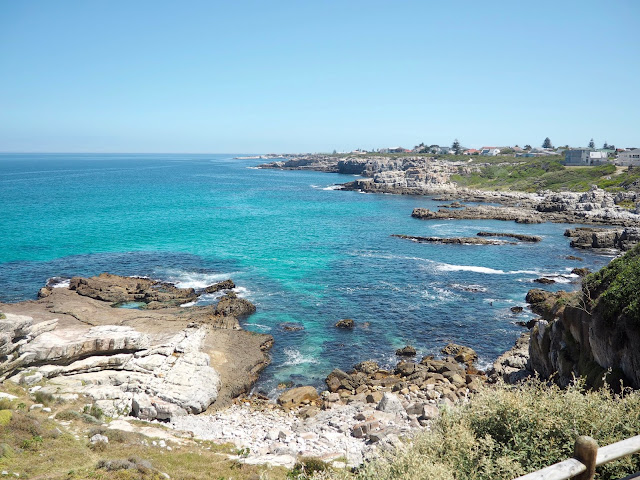
Hermanus | South Africa
You May Also Like

University Buildings & Dean Gardens | Edinburgh
6 October 2018
Ben A’an & Loch Katrine | Hiking Scotland
18 September 2020

